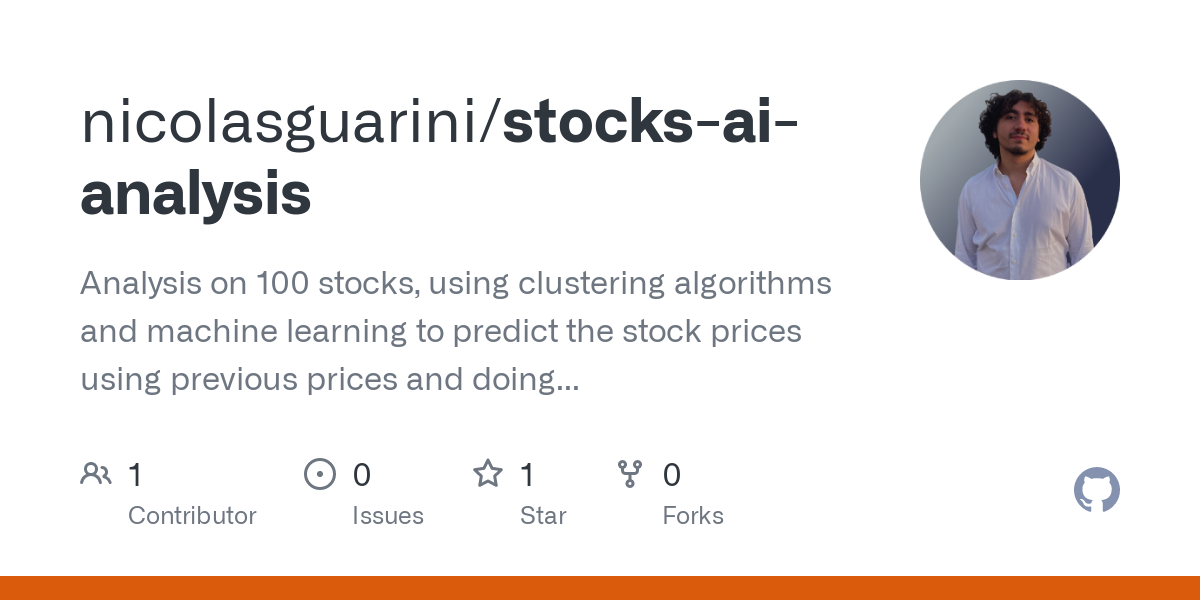20 Great Ways For Picking Best Ai Trading Apps
20 Great Ways For Picking Best Ai Trading Apps
Blog Article
Top 10 Tips To Understand Market Volatility In Stock Trading From The Penny To copyright
Understanding market volatility in AI trading in stocks is vital, whether you are dealing with penny stocks or copyright assets. Here are 10 important tips to navigate the market and use it to your advantage.
1. Find out what drives volatility
Understanding the causes of volatility is important.
Penny stocks: information about the business, earnings report and low liquidity.
copyright: Regulation updates Blockchain technology advances, regulatory updates and macroeconomic trend.
Understanding the factors that drive price movements can help predict future price swings.
2. Use AI to track the Volatility Indexes
Tips: Make use of AI technology to monitor the volatility indicators.
Implied Volatility: This shows the expected price fluctuations in the future.
Bollinger Bands - Highlights overbought and oversold situations
AI is able to analyze these indicators faster and accurately than manual methods.
3. Look at historical patterns of volatility
Tips: Use AI to look at the historical price movement and find recurring volatility patterns.
copyright assets are typically unstable during major events, such as halving or forks.
Knowing the trends of the past can help predict future trends.
4. Leverage Sentiment Analyses
Make use of AI to gauge the mood on social media, news and forums.
Penny Stocks: Keep an eye on discussions on penny stocks and small-cap discussions.
copyright: Study the discussions on Reddit, Twitter, and Telegram.
What is the reason? Changes in sentiment can cause extreme fluctuations.
5. Automate Risk Management
Tip: Use AI to automatically set up stop-loss orders and trailing stops.
Why: Automation protects you during volatile spikes.
6. Strategically trade volatile assets
Tip: Choose trading strategies designed for markets with high volatility:
Penny stocks: Concentrate on strategies for momentum or breakout trading.
copyright: Think about mean-reversion and trend-following strategies.
How? Matching your approach to fluctuations increases your success rate.
7. Diversify Your Portfolio
Spread your investments across multiple areas, asset classes or market caps.
Why: Diversification reduces the overall impact of extreme volatility in a single sector.
8. Watch Liquidity closely
Tip: You can make use of AI to analyse spreads and market depths.
What's the reason? The lack of liquidity in cryptos or penny stocks can cause volatility to increase and slippage.
9. Macro events: Stay up-to-date
Tip Use Feed AI models that incorporate information on macroeconomic trends, central bank policy, and geopolitical events.
Why The ripple effect of bigger market events can be evident in volatile assets.
10. Avoid Emotional Trading
Tip: Use AI to make a decision in high-volatility times to avoid emotional bias.
What's the reason? Emotional reactions such as panic selling or over-trading could lead to poor financial choices.
Bonus: Use Volatility to Your Favor
Tip: Look for opportunities to arbitrage rapidly or scalp trades in volatile increases.
It is a fantastic opportunity to earn profits, but only if you approach it with the right tools and a plan of action.
By mastering the tips listed below, you will be able to improve your understanding of market volatility and improve the trading strategies of penny stocks as well as copyright. Follow the best ai stock trading app recommendations for site advice including ai stock prediction, copyright ai, trading bots for stocks, ai stock market, free ai tool for stock market india, ai trading platform, ai stocks to invest in, stock trading ai, best stock analysis website, best ai copyright and more. 
Top 10 Tips For Paying Attention To Risk Metrics For Ai Stocks And Stock Pickers As Well As Predictions
A close eye on risk metrics can ensure that your AI-based stock picker, investment strategies and predictions are adjusted and resistant to any market fluctuations. Knowing and minimizing risk is crucial to safeguard your portfolio from massive losses. It also allows you make informed data-driven decisions. Here are ten top tips for incorporating risk factors into AI stock picks and investment strategies.
1. Know the most important risk metrics Sharpe Ratios (Sharpness) Max Drawdown (Max Drawdown) and Volatility
Tips - Concentrate on the most important risks such as the sharpe ratio, maximum withdrawal, and volatility in order to evaluate the risk-adjusted performance of your AI.
Why:
Sharpe ratio measures the investment return relative to risk level. A higher Sharpe ratio indicates better risk-adjusted performance.
Maximum drawdown measures the largest loss that occurs from trough to peak to help you assess the potential for large losses.
Volatility measures the market's volatility and fluctuation in price. Low volatility indicates stability, while the higher volatility indicates greater risk.
2. Implement Risk-Adjusted Return Metrics
Tip: Use risk-adjusted return metrics like the Sortino ratio (which concentrates on risk of downside) and Calmar ratio (which compares returns to maximum drawdowns) to determine the actual effectiveness of your AI stock picker.
What are these metrics? They focus on how your AI model performs given the amount of risk it takes on which allows you to evaluate whether the returns are worth the risk.
3. Monitor Portfolio Diversification to Reduce Concentration Risk
Use AI to optimize your portfolio diversification across different asset classes, geographical regions, and industries.
Why: Diversification helps reduce concentration risk. This happens when portfolios are heavily dependent on one particular market, stock, or sector. AI helps to identify the correlations within assets and adjust the allocation to lessen this risk.
4. Follow beta to measure the market's sensitivity
Tip: Use the beta coefficient as a way to determine how responsive your portfolio is to overall market fluctuations.
Why portfolios with betas greater than 1, are more unstable. A beta lower than 1, indicates lower levels of volatility. Knowing the beta is crucial for tailoring risk based on the investor's risk tolerance as well as market fluctuations.
5. Implement Stop-Loss levels and Take-Profit levels based on the tolerance to risk.
Tip: Establish the stop-loss and take-profit limits using AI predictions and risk models to manage the risk of losses and ensure that profits are locked in.
What are the reasons: Stop loss levels are in place to guard against losses that are too large. Take profit levels are there to secure gains. AI can determine the optimal level by studying historical price changes and fluctuations. This can help maintain a balanced risk-reward ratio.
6. Use Monte Carlo Simulations for Risk Scenarios
Tip: Monte Carlo simulations can be used to simulate the outcomes of portfolios under various conditions.
Why? Monte Carlo simulations allow you to assess the probability of future performance of your portfolio, which allows you better prepare for various risk scenarios.
7. Examine correlations to evaluate the risk of systemic as well as non-systematic.
Tip : Use AI to examine the relationships between the portfolio's assets and broad market indexes. This will allow you to identify the systematic as well as non-systematic risks.
Why? Systematic risks affect the entire market, while the risks that are not systemic are specific to every asset (e.g. company-specific issues). AI can detect and limit unsystematic risks by recommending the assets that have a lower correlation.
8. Monitor Value At Risk (VaR) and calculate potential losses
Tips - Utilize Value at Risk (VaR) models, built on confidence levels to estimate the loss potential in a portfolio over the timeframe.
Why: VaR allows you to assess the risk of the worst loss scenario and to assess the risk that your portfolio is exposed to in normal market conditions. AI will adjust VaR according to changing market conditions.
9. Set risk limits that are dynamic Based on market conditions
Tip: Use AI to dynamically adjust the risk limits based on market volatility, economic conditions, and stock-to-stock correlations.
Why is that dynamic risk limits protect your portfolio from excessive risk in times of high volatility or unpredictability. AI is able to use real-time analysis to adjust to ensure that you ensure that your risk tolerance is within acceptable limits.
10. Make use of machine learning to predict Risk Factors and Tail Events
Tip: Use machine learning algorithms that are based on sentiment analysis and historical data to forecast the most extreme risk or tail-risks (e.g. market crashes).
What is the reason? AI can assist in identifying risks that traditional models may not be able detect. They can also forecast and help you prepare for rare but extreme market conditions. Tail-risk analysis helps investors prepare for the possibility of catastrophic losses.
Bonus: Frequently reevaluate Risk Metrics in the light of changes in market conditions
Tips: Review your risk-based metrics and models in response to market fluctuations and you should update them regularly to reflect geopolitical, economic and financial risks.
Reason: Market conditions shift frequently, and using outdated risk models could result in inaccurate risk assessment. Regular updates ensure that your AI models adapt to new risks and accurately reflect current market trends.
This page was last edited on 29 September 2017, at 19:09.
By closely monitoring risk indicators and incorporating them into your AI stocks picker, prediction models and investment strategies you can build a more robust and flexible portfolio. AI can provide powerful tools for assessing and managing risk, allowing investors to make informed decision-making based on data that balances potential returns while maintaining acceptable levels of risk. These guidelines can help you build a solid framework for risk management which will increase your investment's stability and profitability. Check out the top ai stock price prediction for more advice including ai for investing, best ai stock trading bot free, ai for stock market, ai investing, ai investing, ai investing platform, ai stock predictions, best ai copyright, ai stock market, copyright ai bot and more.